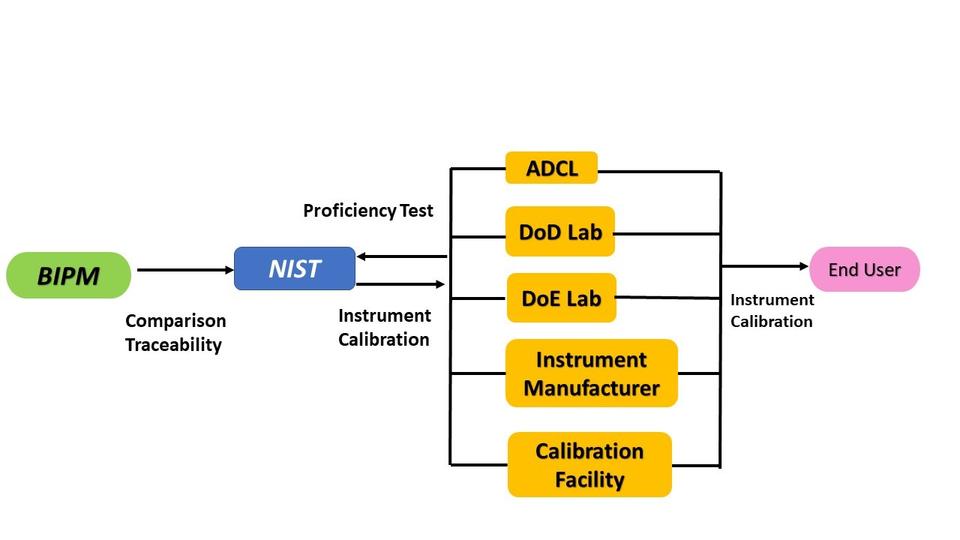Summary
The new NIST x-ray calibration facility has been designed to improve the measurement conditions for x-ray scatter, motion control, environmental conditions, intercomparisons and safety. The previous three NIST x-ray calibration ranges have been combined into one space, resulting in a laboratory that will provide x-ray calibration traceability and dose accountability for the US with features to support future x-ray applications, comparisons, and secondary laboratory accreditation.
Description
The NIST x-ray calibration facility is composed of a suite of rooms that includes the 11 m by 7 m calibration range, a dedicated equipment room, connected by custom shielding ports for communication with the x-ray tubes in the radiation area, an operator control center with a viewing window and laboratory benches, a storage room to secure the vast array of secondary standards and customer’s artifacts and a work space to facilitate measurement exchanges with visiting scientists.
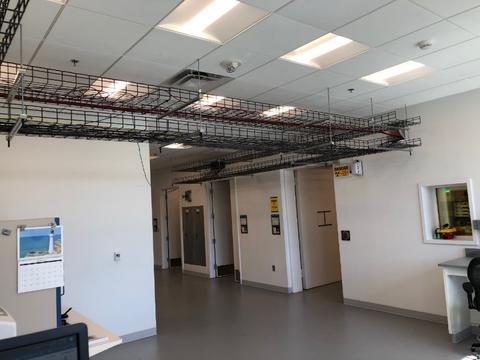
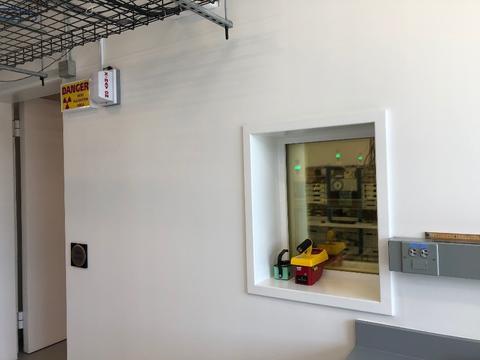
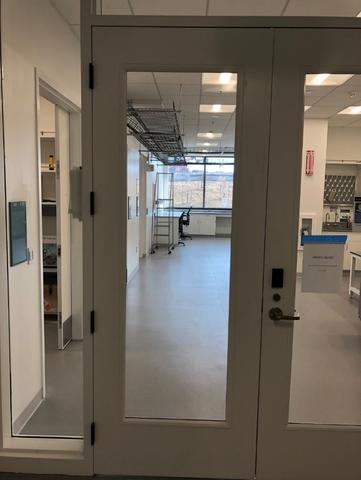
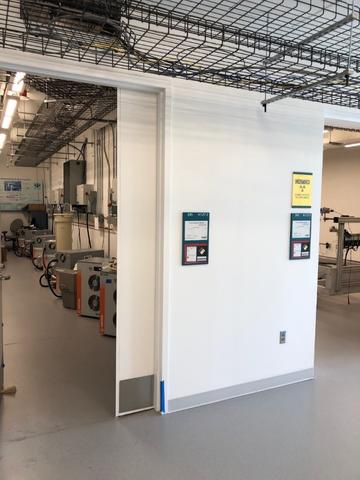
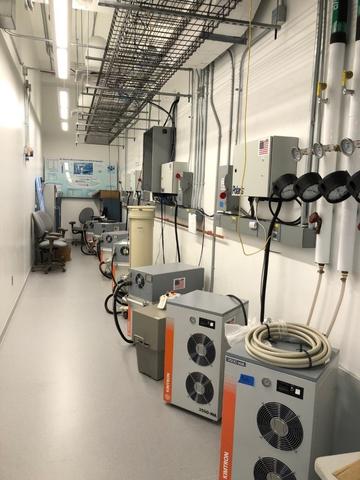
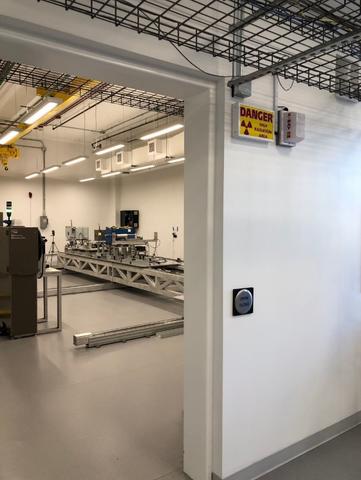
The new NIST x-ray calibration facility features a precision motion controlled 2 axis, 4 m x 4 m, linear positioning system (LPS) that translates across the x-ray beam lines of four x-ray tubes allowing the direct comparison of the three primary x-ray standards and radiation detection instrumentation at source to detector distances between 60 cm to 4 m, repositioning in both directions to within 0.1 mm. The platform of the LPS was designed to incorporate the unique positioning requirements of the three NIST primary x-ray standards and a HPGe detector to the same beam height. The calibration facility has improved laser alignment positioning that provides redundancy to the telescope alignment system.
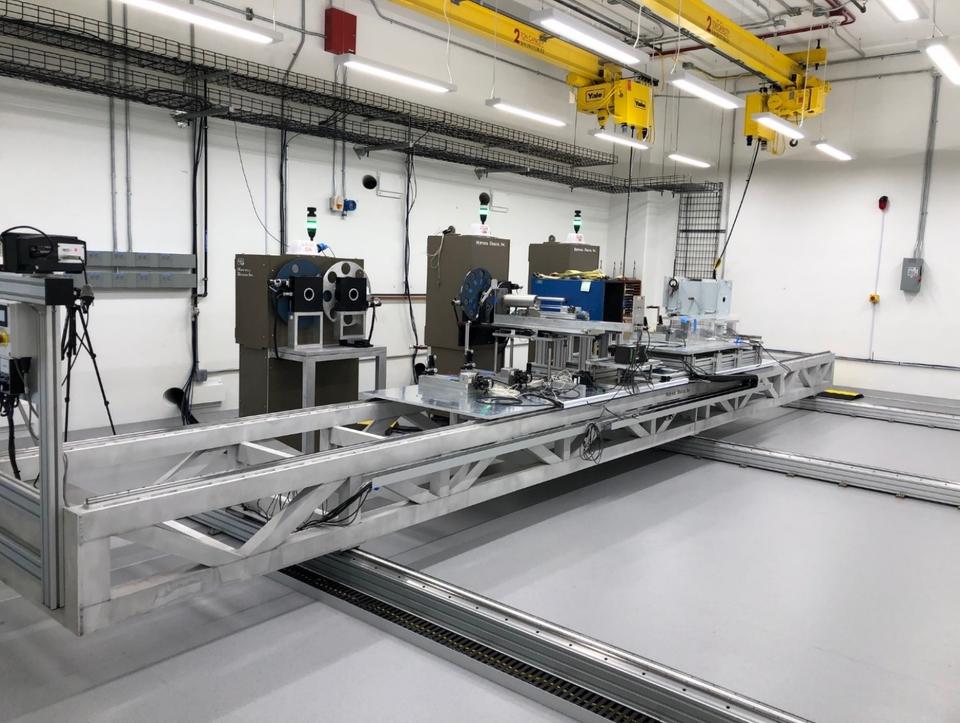
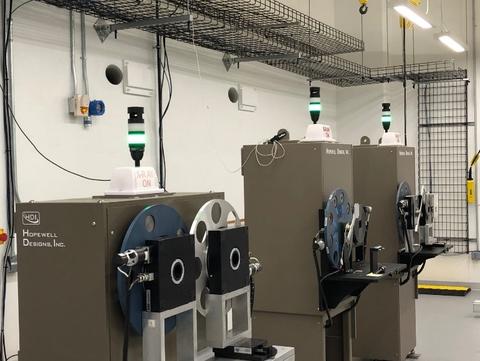
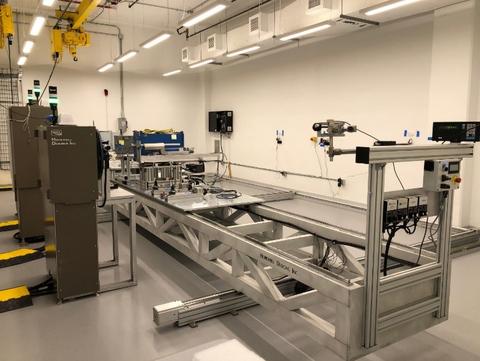
The calibration and irradiation of instruments that measure x ray doses are performed in the NIST x-ray calibration facilities in terms of the physical quantity air kerma in units of gray (Gy). The air–kerma rate, at the calibration position, is realized by a free-air ionization chamber and is expressed in units of gray per second (Gy/s). This realization of the air kerma establishes the national standard for air kerma which can be transferred through a suitable measuring instrument, thus establishing traceability to the national standard. NIST maintains four free-air ionization chambers as primary standards for x-ray doses. A customer instrument is calibrated in terms of air kerma per unit charge through the substitution method in a well-defined point in the reference radiation x-ray beam. The calibration coefficient, provided in a NIST Air-Kerma Calibration Report, is the quotient of the air kerma and the charge generated by the radiation in the customer’s ionization instrument, in units of Gy/C. The average charge used to compute the calibration coefficient is based on measurements with the wall of the ionization chamber at a set polarity and potential. With the assumption that the instrument is open to the atmosphere, the measurements are normalized to a pressure of one standard atmosphere (101.325 kPa) and a temperature of 295.15 K (22 °C). The calibration coefficients listed in NIST Air-Kerma Calibration Reports can be used to calculate the air kerma in a customer’s facility through the quantification of charge collected from the test instrument in calibration conditions that approximate NIST reference radiation beams. Calibrations of x-ray measuring instruments have a relative expanded uncertainty of less than 0.8 %.
To meet the various needs of the NIST air-kerma customer base, instrument calibrations are performed over a wide range of x-ray beam qualities, involving many combinations of generating x-ray potentials and attenuators. The x-ray generating anode types are Tungsten, Molybdenum and Rhodium with various combinations and thicknesses of high purity attenuators including Aluminum, Copper, Lead, Tin, Silver, Molybdenum and Rhodium. With over 100 reference radiations, NIST provides traceability to U.S. industry for medical, defense and energy applications. Medical traceability is provided to diagnostic and therapeutic radiology, radiation protection and personnel dosimetry. The FDA-Mammography Quality Standards Act (MQSA) requires that all clinical mammography units be calibrated with an instrument that is traceable to a national x-ray standard. NIST provides dose traceability to the US Armed Forces to support their secondary calibration laboratories and dosimetry efforts. The Department of Energy’s national laboratories gain NIST traceability for dosimetry and protection through routine calibrations.
The NIST x-ray air kerma service also provides proficiency testing. The MQSA states that any US mammography facility providing NIST-traceable calibrations must participate in a biennial proficiency program directly with NIST. NIST provides the required proficiency tests for secondary calibration facilities for the DOE, Armed Forces, US chamber manufacturers, NVLAP and the American Association of Physicists in Medicine (AAPM) Accredited Dosimetry Calibration Laboratory (ADCL) programs. NIST provides the testing facility with a calibrated instrument, provides the test protocol, conducts the test and provides a NIST Proficiency Test report.
